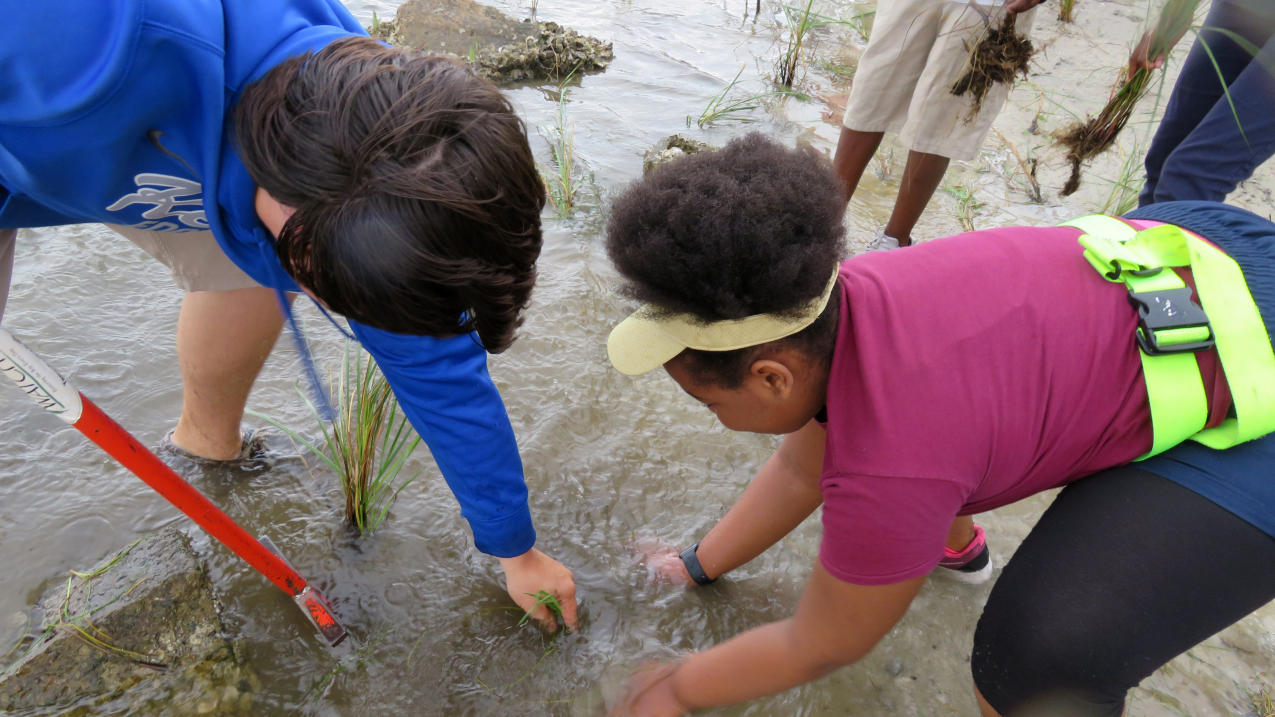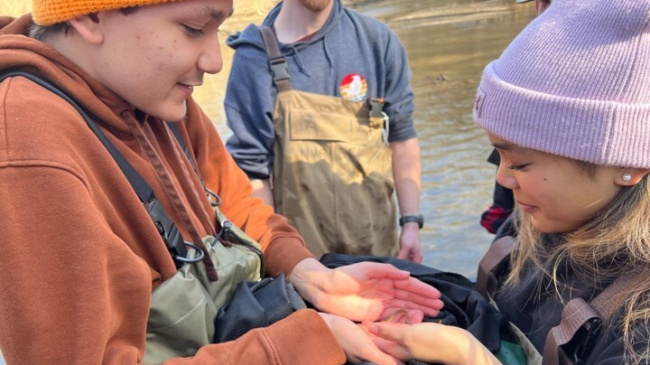Rising sea levels and weather-driven storm surge threaten to inundate low-lying coastal communities and ecosystems. This is becoming increasingly problematic for people, property, and the economy. In Florida, unusually high tides and moderate to heavy rains routinely cause coastal flooding, costly disruptions to communities, and public health and water quality challenges. Teacher Chris Simoniello took action with local St. Petersburg K-12 students through a stewardship project funded by the NOAA Climate Stewards Education Project.

Students in the Lakewood High School Aquatic Management Systems and Environmental Technology career program help students at Bay Point Elementary School plant marsh grass in St. Petersburg, Florida. (Image credit: Chris Simoniello, NOAA Climate Steward)
Through NOAA Climate Stewards, educators can apply to join the stewardship community and receive funding to support activities that mitigate or adapt to the impacts of climate change. With funding during the 2016–2017 school year, Chris Simoniello led 60 students from Title I schools in 29 hands-on science lessons. Topics included natural and human contributions to global climate change, the role of coastal wetlands in the sequestration of carbon, and assessing vulnerability to inundation by looking at a variety of flood maps and models. The students developed plans for adaptation to rising sea levels and emergency preparedness plans for severe weather. They also learned about a variety of career options during their lessons, including biogeochemist, meteorologist, wetland ecologist, floodplain manager, and water quality manager. Partners included the University of South Florida, Weedon Island Preserve, Tampa Bay Watch, the City of St. Petersburg, Tampa Bay Estuary Program, and the Gulf of Mexico Coastal Ocean Observing System.
While learning the science behind global warming, sea level rise, and storm surge, the students put their knowledge into action. By changing their behaviors related to transportation, food choices, home energy use, and waste management, they reduced the amount of carbon they released into the atmosphere by 0.8 tons. The students also restored habitat at Bay Vista Park in St. Petersburg, Florida, planting 1,350 plugs of Spartina in wetlands, within an area of 2,293 square feet. These marsh grasses will sequester up to 35.77 tons of carbon dioxide annually.
In addition to restoring their local environment, the students gained science knowledge. These improvements were measured by pre- and post-testing, which demonstrated increases in knowledge and understanding ranging from 16% to 88%, respectively. In addition, state test scores of the students in the project exceeded the district and state averages, with 74% of the participants passing, whereas the school had a passing rate of less than 50% in the previous two years.
Over the past six years, the NOAA Climate Stewards funded over 125 educators to implement stewardship projects with their audiences. The program reaches well over a thousand teachers annually with professional development opportunities, such as monthly webinars as well as face-to-face and virtual conferences. In FY 2018, the NOAA Climate Stewards Education Project changed its name to the NOAA Planet Stewards Education Project. This change represents the expansion of the program’s scope to include a wider range of NOAA topics related to understanding and protecting our environment, such as marine debris, natural resources, and severe weather events.
This story was originally published as part of the 2017 NOAA Education Accomplishments Report.



